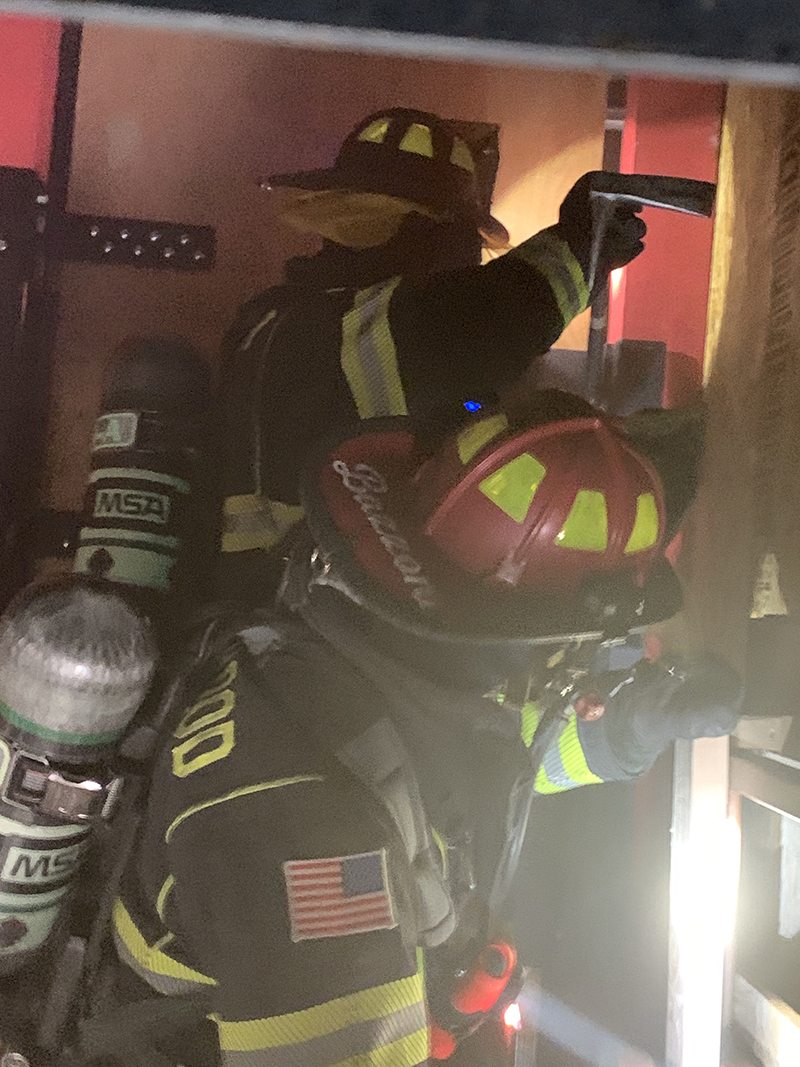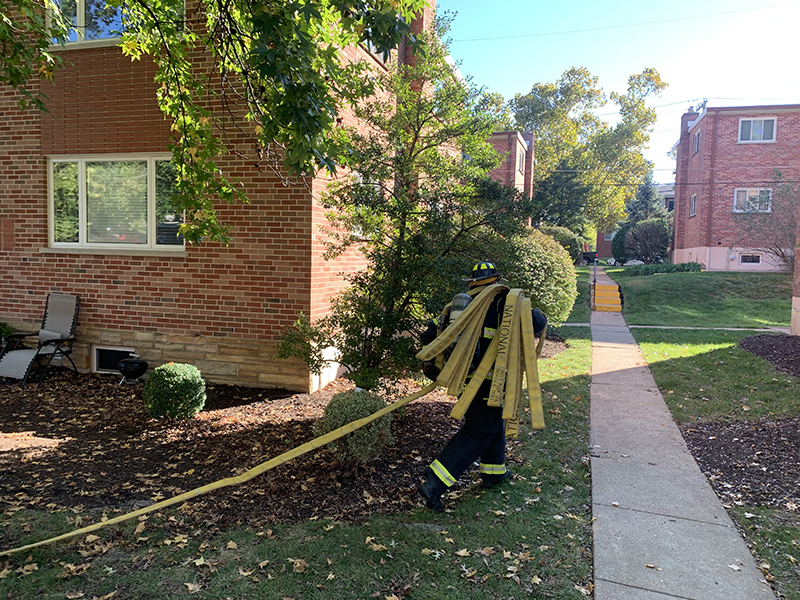Training Notebook | By Brian Zaitz
Company training is the foundation for the success of any fire company and is the cornerstone of an organizational training program. If you see a strong fire company, you will find a company that is conducting high-quality, high-impact company-level firefighter training (photo 1).
- Effective Company-Level Firefighter Training
- The Company Officer: The Perfect Training Officer
- The Importance of Realistic Firefighter Training
How do you know if your company training is effective? How do you keep company training relevant? The key is to have a template to organize the training to ensure that all the elements are met for the training to be effective. Training is to hone skills, build camaraderie, and change behavior for the better. These occur when training is high quality; the issue is that these can go the other way when training is haphazardly conducted, skills are lost, the team fractures, and negative behaviors are learned. So, how do you build a better company training?

(1) Photos by author.
Topic
To begin, you must pick a topic, one that is relevant to the crew. As the company officer, you should be constantly conducting needs analysis on scenes and in the station. The topic should look to build on a recent concern, a normal on-scene practice (hoseline deployment, ladders, search, rapid intervention), or a low-frequency-use piece of equipment or skill. I tend to keep the company level training to the basic skill sets; these are the building blocks for everything we do in the fire service and need constant review to maintain efficiency.
Standard/Standard Operating Procedure
Next, correlate that training to a standard, standard operating procedure (SOP), or fire service practice. These can come from departmental standard operating guidelines, policies, and procedures and departmental practices. Also look at National Fire Protection Association (NFPA) standards. The NFPA provides a great resource to validate and associate the training to a standard. Key NFPA standards are 1001, 1002, 1006, and so on (Standards for Professional Qualifications); 1403, 1404, 1410, and so on (Standards for Procedures); and NFPA 1700, Guide for Structural Fire Fighting. These are just a few, but they provide the specific job performance requirement, which aids in the next function of development.
Objective
This is an often-overlooked aspect of training development; however, it is likely the most critical. We have all conducted or attended training that was good but, in the end, we looked around and said, what was the purpose? Having a solid, SMART (S-Specific, M-Measurable, A-Attainable, R-Realistic, T-Time Oriented) objective will ensure that our training meets the goals as stated above—to hone skills, build camaraderie, and change behavior. Specific provides the map to ensure that we have a beginning, middle, and end of training. Measurable sets parameters to measure the success of the training. Attainable relates to can this training be conducted? Realistic is how relevant and true this training is to your desired outcome. Time oriented is the associated time needed or timed drill for the training. Using the SMART acronym along with the job performance requirements from the NFPA and departmental SOPs will set the training up for success and validate the training with the company.
Equipment/Logistics
There is nothing worse than going to training for which the instructor has not properly prepared the grounds. When developing your company training, identify all the equipment needed for the training as well as any logistical needs. Equipment includes personal protective equipment (PPE) for the firefighters, tools, and apparatus. Logistics may include use of the training tower, station coverage if the training is involving a delay in response capabilities, and any additional items needed for the training. An example for forcible entry might be full PPE with eye protection, a striking tool, a halligan, a forcible entry door, and wood blanks for the door.
Training Plan
This is where the rubber meets the road. The training plan is the step-by-step process of how you will conduct the training and how you want the members to work through the training. This should be very specific. Imagine handing this plan over to another company officer, who should be able to recreate this training off this plan and run it how you envisioned. Include steps such as “All members don PPE” and “Nozzle firefighter grabs nozzle and bundle prior to walking away from apparatus”(photo 2). In addition, identify any potential safety concerns and conduct risk mitigation where possible prior to running the training. The more specific the training plan is the better, especially during the evaluation phase.

(2)
Running the Training
Now it is time to conduct the training. Run the training with your company. Run it a few times if you can, switching positions and allowing all members to act in the various roles and capacities (photo 3).

(3)
Be cognizant of the fact that you are dealing with humans. I know many will say that calls do not have temperature settings or that we fight fires in storms. That said, training is a planned event, and we must take precautions to care for our staff. Extreme temperatures, both cold and hot, pose a hazard to the body, especially when conducting high-impact training. As an instructor, be aware of these and try to augment the training to provide for either increased rehab and cooling periods or moving the training to a climate-controlled environment. In addition, be aware of training in wet environments where slips and trips will be more problematic. Again, I know we work in the rain; however, when we have the ability to prevent an injury, we must take that into consideration. Remember, training is a planned event. We must take into account risk management and provide for the safety of our people. Training is no good if someone gets hurt or falls ill because of the training.
Evaluation
Now that the training is complete, it’s evaluation time—an evaluation of you as the instructor but also the overall training. Was it successful? How did you do overall with the delivery? Did it miss anything in terms of equipment/safety item? As you conduct this evaluation, correct and update your training. If you wrote the training on scratch paper, now is the time to codify the training into a nice format and save the document. Classify the training into a category. Typically, I like to keep these easy: Fire-EMS-Rescue.
I suggest printing these training plans and putting them into a binder; this binder will serve you well as a company officer for those days when you hit the proverbial training block and cannot come up with what to train on. It also provides you with the ability to pass the training onto others in your company. Putting in the work upfront to build and conduct successful company training will not only enhance your crew but will also provide you with a training catalog for years to come as you progress as a company officer.
Brian Zaitz is a 22-year veteran of the fire service and assistant chief of operations and training for the Kirkwood (MO) Fire Department. He is a safety officer for FEMA US&R’s Missouri Task Force 1. He is the first vice president of the International Society of Fire Service Instructors, president of the St. Louis County Training Officers Association, a Fire Service Advisory Board member for Detectogether, and a commission member for the State of Missouri Fire Safety and Education commission. He is an advisory board member of Fire Engineering and a workshop instructor for FDIC International. He has several degrees including a master of science degree in human resource development. He is a graduate of the National Fire Academy’s Executive Fire Officer program and has credentials as a Chief Fire Officer and Chief Training Officer.

